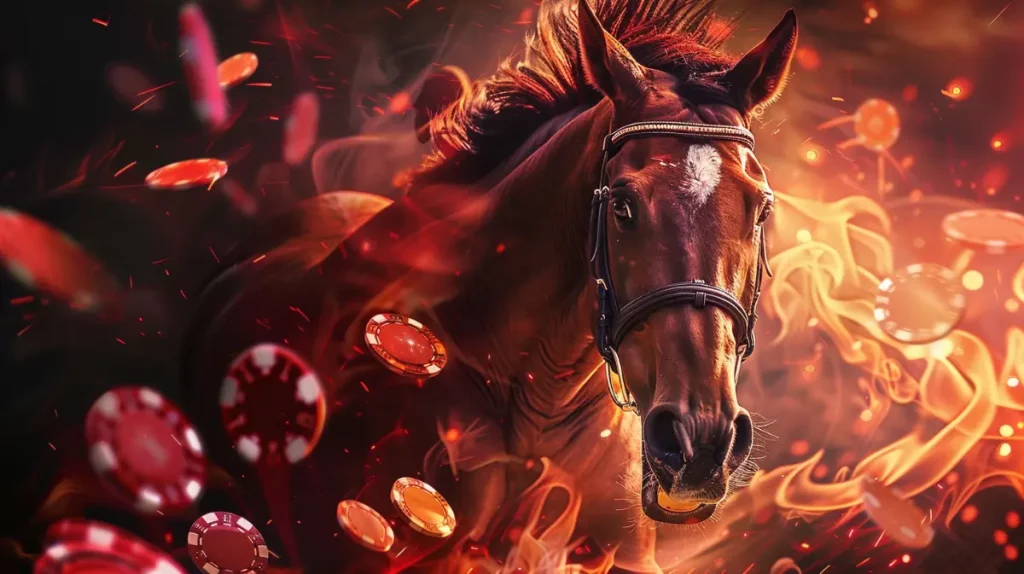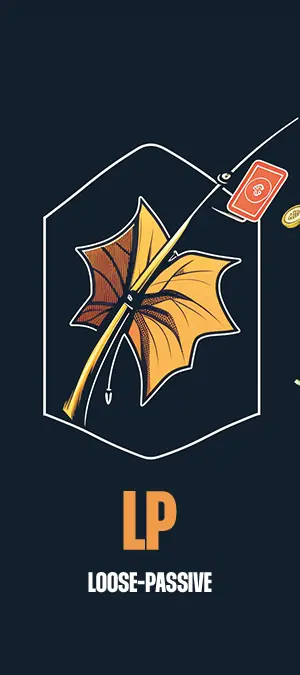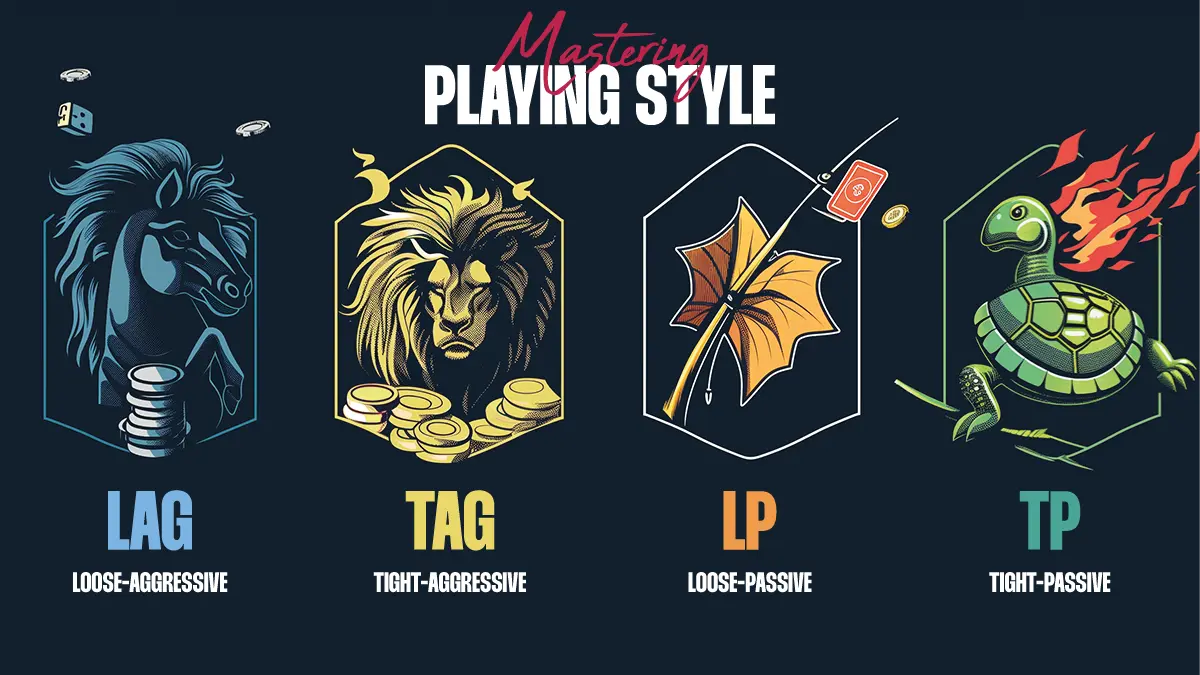Introduction to Poker Playing Styles
Poker isn’t just a game of cards—it’s a battle of wits, strategy, and personality. Your playing style is your war strategy in the realm of poker, a reflection of your approach, your decisions, and ultimately, your success at the table.
Whether you’re a cautious player who meticulously calculates every move or a bold risk-taker who thrives on pressure, understanding the different poker playing styles is crucial.
This guide dives deep into the heart of poker’s strategic battlefield, exploring the four primary playing styles—Tight-Aggressive (TAG), Loose-Aggressive (LAG), Tight-Passive (TP), and Loose-Passive (LP)—and beyond.
By recognizing these styles, including the unique nicknames and strategies of poker’s greatest players, you’ll gain insights into shaping your gameplay and psychological warfare at the felt.
Let’s shuffle up and deal into the world of poker playing styles.

The Four Main Poker Playing Styles
Poker playing styles are as diverse as the players at the table, each with its unique approach to the game.
Understanding these styles is not just about knowing when to bet or fold; it’s about understanding your opponents and yourself.
Here, we break down the core characteristics of each style.
Tight-Aggressive (TAG)


Tight-Aggressive (TAG)
Patience fuels power.
Tight-Aggressive players select few hands but play them aggressively. Known for disciplined, calculated risks, TAGs maintain a strong table image, leveraging their tight range for profitable, assertive plays. Ideal for players who prefer a strategic, controlled approach, maximizing gains from strong positions while minimizing losses.
Common Stats
VPIP
20-25%
PFR
18-22%
af
3.0-4.0
The Tight-Aggressive player is the sniper of the poker world, waiting patiently for the right moment to strike. TAGs play a selective range of hands, but when they do play, they bet and raise aggressively.
This style is about control and precision, making the most of strong hands and not wasting chips on speculative ones.
The advantage of this style is its predictability in a good way; opponents know you only play solid hands, which can make them hesitant to enter a pot you’re invested in.
However, the TAG style also requires discipline and the ability to fold when you’re not in a strong position.
Poker Greats Embodying the TAG Style
Loose-Aggressive (LAG)


Loose-Aggressive (LAG)
Chaos creates opportunity.
Loose-Aggressive players embrace risk, playing a wide variety of hands with aggressive betting. This unpredictability can dominate table dynamics, forcing opponents into difficult decisions. LAGs thrive on creating pressure and exploiting weaknesses, suitable for skilled players who can manage high variance and adapt quickly.
Common Stats of a loose-agressive player
VPIP
30-40%
PFR
25-35%
af
4.0+
In contrast, the Loose-Aggressive player is the berserker at the table, using aggression and unpredictability as their main weapons. LAGs play a wide range of hands, often putting pressure on their opponents with bets and raises. This style can be highly effective in creating a dynamic table image and capitalizing on opponents’ hesitations and mistakes. The key to mastering the LAG style is knowing when to dial back the aggression and not let the loose play turn into recklessness.
Iconic Players Championing the LAG Approach
Tight-Passive (TP)


Tight-Passive (TP)
Steadiness wins races.
Tight-Passive players are conservative, opting for a limited range of strong hands without aggressive betting. This low-risk approach minimizes potential losses but also caps winnings. Ideal for beginners, TPs focus on solid hands, though they risk being outmaneuvered by more aggressive strategies.
Common Stats of a Tight-Passive player
VPIP
15-20%
PFR
10-15%
af
1.0-2.0
The Tight-Passive player, often referred to as the “Rock,” prefers a conservative approach to the game. TPs play a limited number of hands and tend to check or call rather than bet or raise. This style minimizes risk and avoids putting too many chips in the pot without a strong hand. While it can be a safe way to play, it also means missing out on opportunities to maximize winnings from strong hands or to bluff opponents out of pots.
Renowned Strategists Favoring Tight-Passive Play
Loose-Passive (LP)


Loose-Passive (TP)
Enjoyment over dominance.
Loose-Passive players participate in many hands but rarely take the initiative in betting. Preferring to call rather than raise, LPs aim to see many flops but often fail to capitalize on strong hands. This approach is less competitive, leading to gradual chip loss against more aggressive opponents.
Common Stats of a loose-Passive player
VPIP
30-50%
PFR
10-20%
af
1.5-
Finally, the Loose-Passive player, or the “Whale,” enjoys playing many hands but typically opts for checking and calling. This style is the least aggressive and can often lead to donating chips to more assertive players. LPs enjoy the social aspect of poker and the thrill of seeing flops but may struggle to turn a profit over the long term without the aggression needed to protect their hands or bluff effectively.
Memorable Figures With a Loose-Passive Tactic
This style is less commonly associated with top professional players, as it’s generally considered a less profitable way to play the game at high levels. However, some recreational or amateur players with significant bankrolls who’ve made waves in high-stakes games might fit this description, but they are not typically considered “legends” of the game.
Nicknames and Colorful Personalities in Poker
Poker is as much about the people as it is about the cards. Over the years, players have earned nicknames that reflect their playing styles, adding a rich tapestry of characters to the poker world. “Rocks” are solid and unmovable, embodying the tight-passive approach with a discipline that can be both admirable and exploitable. “Maniacs,” on the other hand, take the LAG style to its extreme, betting and raising in a whirlwind of aggression that can unsettle even the most experienced players.
“Sharks” are the predators of the poker ecosystem, adapting their style to exploit the weaknesses of their opponents, whether that means playing tight-aggressive against passive players or switching to a loose-aggressive approach to dominate tighter tables. “Fish” are the prey, often new or inexperienced players who haven’t yet refined their strategy, making them easy targets for the sharks.
Understanding these nicknames and the personalities behind them is crucial for navigating the poker world. Recognizing a “Rock” at your table means knowing they’re unlikely to bluff, while spotting a “Maniac” means bracing yourself for a rollercoaster of raises. Adapting your play to exploit these personalities can be the key to your success at the tables.
Playing Styles of the World’s Best Poker Players
The legends of poker aren’t just known for their winnings but for their unique styles that have left an indelible mark on the game. Daniel Negreanu, known for his incredible ability to read opponents, embodies a flexible approach, shifting between styles as needed. Phil Ivey, often considered the greatest all-around player, uses a tight-aggressive style to dominate his opponents, combining patience with lethal aggression.
Phil Hellmuth, the “Poker Brat,” is famous for his tight play and explosive temperament, which he uses to unsettle opponents while waiting for premium hands. On the other end of the spectrum, Tom Dwan, a player from the online generation, showcases the power of the loose-aggressive style, applying pressure and challenging traditional notions of “correct” play.
Studying these players reveals a common theme: mastery of their chosen style and the ability to adapt to the dynamics of the table. For aspiring poker players, the lesson is clear—finding a style that suits your personality and goals is crucial, but so is the flexibility to adjust your approach based on your opponents and the situation at hand.
Choosing Your Poker Playing Style
Selecting a poker playing style is a deeply personal decision that should reflect your comfort level, strategic understanding, and psychological warfare skills. For beginners, starting with a tight-aggressive approach can provide a solid foundation, teaching discipline and the importance of position and hand selection. As you gain experience, experimenting with elements of the loose-aggressive style can add versatility to your game.
The key is to remain true to your instincts while being open to growth and learning. Poker is a game of perpetual learning, and the most successful players are those who continuously refine their strategies and adapt to new challenges.
Adjusting Your Style for Different Poker Games
Poker comes in many forms, from the fast-paced action of No-Limit Hold’em to the strategic depths of Pot-Limit Omaha and beyond. Each variant demands a slightly different approach, and the best poker players are those who can adjust their style to suit the game at hand.
In No-Limit Hold’em, a tight-aggressive style can be particularly effective, leveraging the power of big bets to protect your hands and apply pressure. In contrast, Pot-Limit Omaha often rewards a more loose-aggressive approach, given the greater potential for drawing hands and the importance of aggression in building pots for your big hands.
Adapting your style also means adjusting to the tendencies of your opponents. In a table full of aggressive players, adopting a more conservative approach can pay dividends, while facing passive opponents might call for ramping up the aggression to capitalize on their hesitancy.
Conclusion
Understanding and mastering poker playing styles is a journey, not a destination. The most successful players are not those who rigidly adhere to a single style but those who adapt, learn, and grow with each hand dealt. Whether you’re a TAG, LAG, TP, or LP, the key to success lies in understanding the strengths and weaknesses of your style and evolving your strategy to stay one step ahead of the competition.
Poker is a game of infinite complexity and nuance, and your playing style is your personal signature on the game. Embrace it, refine it, and let it guide you to victory at the tables.

